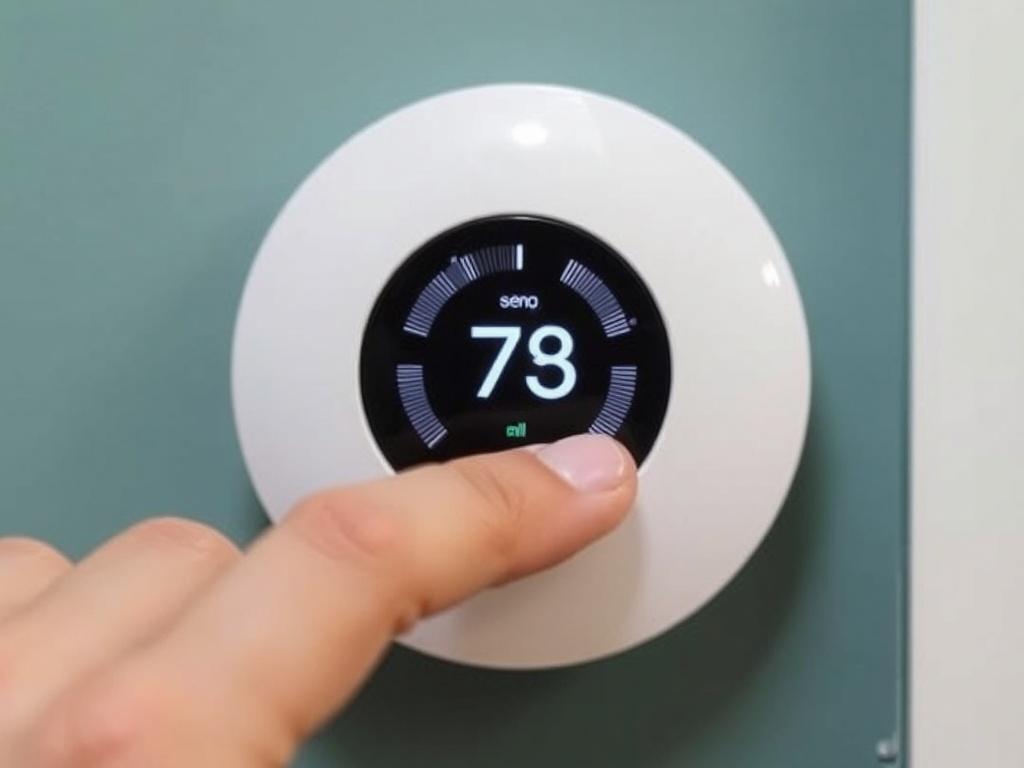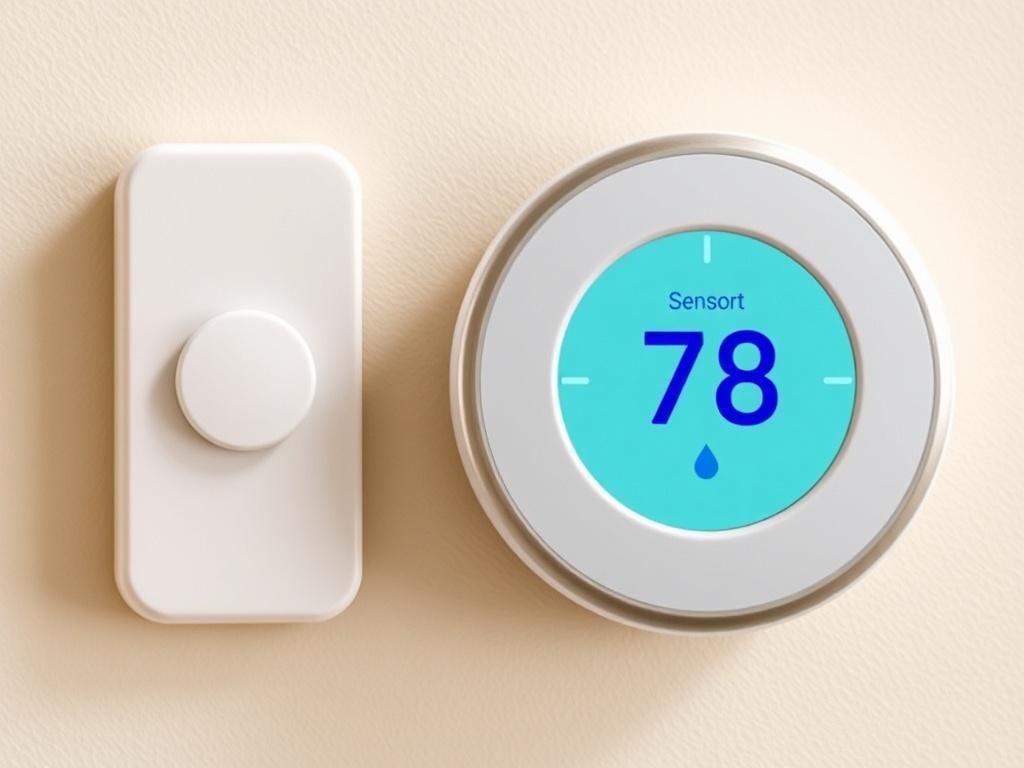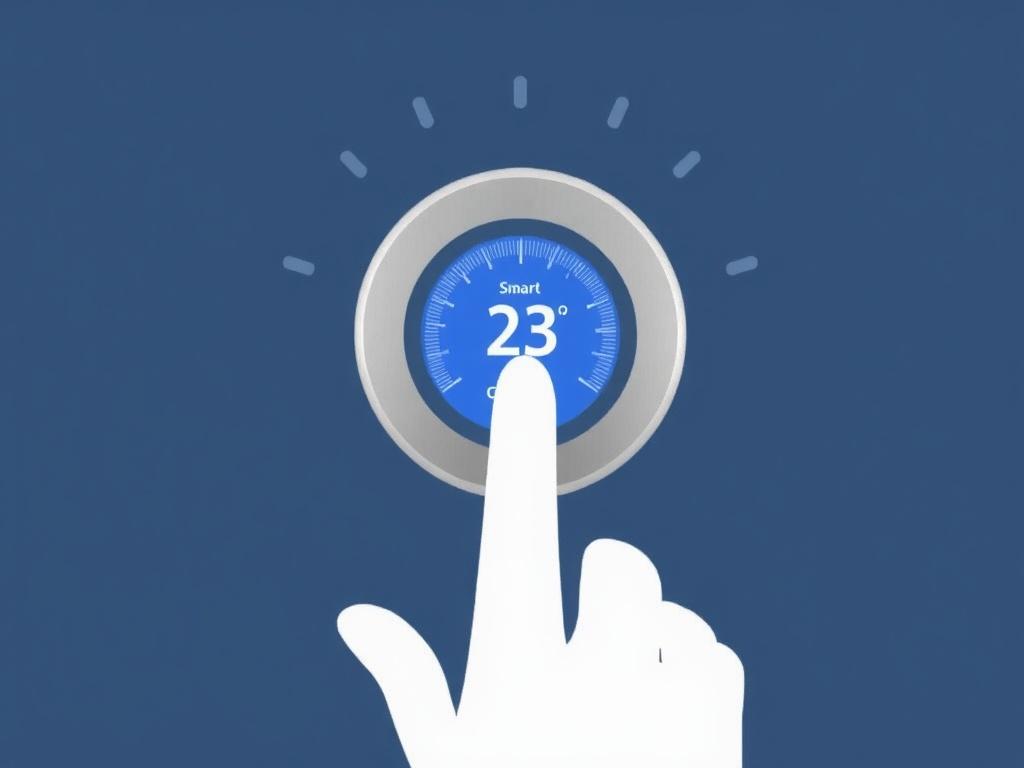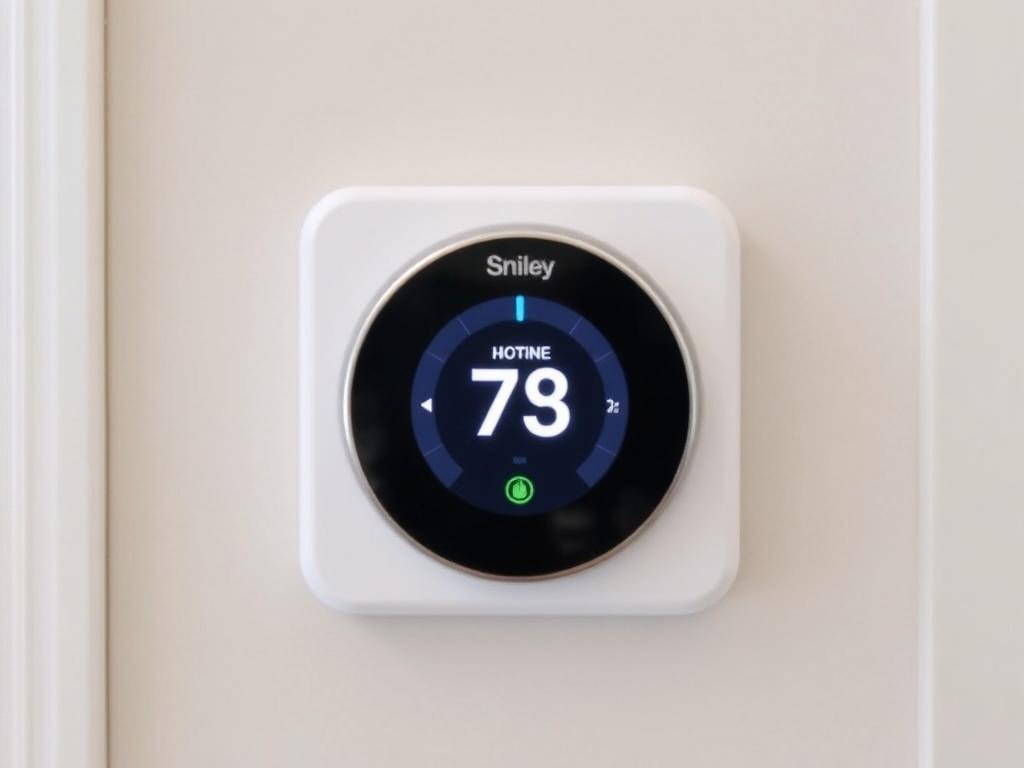- What Is a Smart Thermostat, Really?
- How Smart Thermostats Save Energy: Key Mechanisms
- Automated Scheduling
- Occupancy Detection and Geofencing
- Learning Algorithms
- Remote Control and Data Insights
- Multiple Sensors and Room-Level Control
- Integration with Other Systems
- Types of Smart Thermostats: Which Category Fits You?
- Learning Thermostats
- Sensor-Based Thermostats
- App-First Thermostats
- Minimal Smart Thermostats
- Key Features to Look For (and Why They Matter)
- Compatibility with HVAC Systems: What You Must Check
- Comparing Popular Models: What Features Drive Savings?
- Model Deep Dives: What You Should Know
- Installation and Setup: Step-by-Step
- Tips to Maximize Real-World Savings
- Common Myths and Pitfalls
- Myth: Any smart thermostat will guarantee big savings
- Myth: Learning thermostats always outsmart you
- Myth: Smart equals effortless
- Costs, Savings, and Payback: Crunching the Numbers
- Sample Savings Scenario
- Environmental and Comfort Benefits Beyond Dollars
- Security and Privacy Considerations
- When a Smart Thermostat Might Not Be a Smart Buy
- Integrating a Smart Thermostat Into a Smart Home
- FAQ: Quick Answers to Common Questions
- Will a smart thermostat work with my old furnace?
- How much money will I save?
- Are remote sensors necessary?
- Is installation hard?
- Decision Checklist: Are You Ready for a Smart Thermostat?
- Practical Next Steps
- Conclusion
Smart thermostats promised a lot when they first showed up: convenience, modern looks, app control, and, best of all, energy savings. But not every smart thermostat actually delivers on that last promise in a way you’ll notice on your monthly bill. If you’ve ever wondered whether a smart thermostat really saves energy or if it’s just another gadget that makes your home look fancy, you’re in the right place. This piece walks you through how smart thermostats work, what features truly matter for energy savings, how to choose and install one, and practical tips to make the most of the device once it’s in place. I’ll also guide you through real-world trade-offs, compatibility issues, and a clear cost-versus-savings view so you can decide with confidence.
Let’s start by demystifying what a smart thermostat is and how it differs from older programmable models. Unlike the clunky timers of the past, smart thermostats combine sensors, software, and connectivity to adapt to your behavior, learn your schedule, or follow rules you set from your phone. That sounds great, but the technology only saves energy when it interacts properly with your lifestyle, your HVAC system, and the way you set it up. Over the next several thousand words we’ll break it down step by step so you can pick the thermostat that actually makes a difference in comfort and cost.
What Is a Smart Thermostat, Really?
A smart thermostat is an internet-connected device that controls your heating and cooling system but adds intelligence through automation, sensors, remote control, data analytics, and sometimes learning algorithms. Basic thermostats ask you to set a temperature. Programmable thermostats let you schedule temperatures by time of day. Smart thermostats go further by learning patterns, using occupancy sensors, integrating with weather forecasts, enabling geofencing (so your home knows when you’re on your way back), and providing energy reports.
The real value is not in the LED display or the smartphone app—it’s in reducing the time your HVAC runs unnecessarily. That could mean slightly lowering the temperature when you’re away during winter, or allowing a slightly higher temperature in summer while you’re at work. But “saving energy” is not magic; it’s about small adjustments that add up over time without making your home uncomfortable.
How Smart Thermostats Save Energy: Key Mechanisms
Smart thermostats use several mechanisms to reduce energy use. Understanding these will help you pick features that matter to you.
Automated Scheduling
Instead of a rigid weekly schedule you must program manually, smart thermostats can auto-schedule based on your behavior or let you set flexible schedules remotely. Automation reduces the chance you’ll forget to change the thermostat before leaving for vacation or work.
Occupancy Detection and Geofencing
Some thermostats use motion sensors to detect if someone is home and adjust comfort levels accordingly. Others use your phone’s location—geofencing—to set a “home” or “away” mode automatically. When you’re out, the thermostat can let the house drift a few degrees to save energy and then bring it back to comfort before you return.
Learning Algorithms
Certain models learn your manual adjustments and build a schedule over time. This can be convenient but isn’t a substitute for smart placement and sensible setpoints. Learning helps reduce manual intervention, but it works best when paired with good sensor data and clear comfort preferences.
Remote Control and Data Insights
Controlling your thermostat from your phone lets you change settings when plans change. Energy reports help you understand patterns and identify wasteful habits. Some systems offer suggestions to lower usage, like optimizing setpoints or scheduling maintenance.
Multiple Sensors and Room-Level Control
Most older thermostats only read temperature near the unit. Smart systems often include remote sensors to measure temperatures in different rooms so the thermostat keeps the area you care about most comfortable without overheating or overcooling other spaces.
Integration with Other Systems
When a thermostat is integrated with smart vents, humidifiers, or whole-home systems, it can coordinate to run the most efficient mode of heating and cooling. For example, it can delay heating until sunlight warms a room or turn off the HVAC when a window sensor detects an open window.
Types of Smart Thermostats: Which Category Fits You?
Not all smart thermostats are the same. Here’s an overview of the main types you’ll encounter so you can match a product to your priorities.
Learning Thermostats
These thermostats learn your preferences and create a schedule automatically. They are great if you want minimal input and prefer a device to adapt on its own. However, if your schedule is erratic or you travel often, pure learning models can become confused or impose a schedule that doesn’t match reality.
Sensor-Based Thermostats
These prioritize data from multiple sensors placed around the home. If you have temperature variations or specific rooms that matter (like a nursery), sensor-based systems offer better comfort and potential energy savings by focusing conditioning where it’s needed.
App-First Thermostats
These prioritize remote control and integration with other apps or services. They’re a good fit if you like to adjust settings on the fly, participate in utility demand-response programs, or want robust third-party integrations.
Minimal Smart Thermostats
Some models are simple thermostats with smart features like remote access and basic scheduling but without learning or multiple sensors. They tend to be cheaper and are ideal if you want a low-tech smart upgrade or have a predictable schedule.
Key Features to Look For (and Why They Matter)
Choosing a smart thermostat means balancing features, compatibility, price, and your daily routine. Here are the features worth paying attention to and why they matter for real energy savings.
- Compatibility with your HVAC system: Incompatible thermostats can’t control all systems, especially heat pumps, multi-stage systems, or systems without a common (C) wire.
- Remote sensors: These reduce temperature bias and allow room-based comfort.
- Geofencing or occupancy detection: Useful for automatically switching to energy-saving modes when the house is empty.
- Learning capability: Convenient, but you still need to audit the schedule occasionally.
- Energy reporting: Helps you find and fix wasteful habits.
- Integration with smart home platforms: If you already use Alexa, Google, or Apple HomeKit, check compatibility.
- Utility program support: Some thermostats can enroll in demand-response programs that pay you or give rebates for shifting usage.
- User interface and app quality: A good app makes it easy to use scheduling and view energy reports.
- Price and warranty: Factor initial cost against expected energy and rebate savings.
Compatibility with HVAC Systems: What You Must Check
Smart thermostats don’t work with every heating and cooling system out of the box. Before you buy, verify compatibility with your specific HVAC system type and wiring. The following table summarizes common system types and notes on compatibility.
| HVAC System Type | Compatibility Notes |
|---|---|
| Single-stage furnace or AC | Most smart thermostats support these. Simple wiring usually works. |
| Two-stage or multi-stage systems | Requires a thermostat that explicitly supports multi-stage control. |
| Heat pumps | Choose a thermostat compatible with heat pump control and auxiliary heat stages. |
| Millivolt or hydronic systems | Many smart thermostats are incompatible; look for models with explicit support. |
| No common (C) wire present | Some thermostats require a C wire for power. Others offer a power adapter or include a power-sharing solution. |
| Zoned systems | May require a thermostat per zone or an integrated control system. |
If you’re unsure, take a photo of your current thermostat wiring and check the manufacturer’s compatibility tool or contact professional installers.
Comparing Popular Models: What Features Drive Savings?
There are many brand names: Nest, Ecobee, Honeywell, Emerson Sensi, Lux, Bosch, and more. Instead of praising one brand above all, it’s more helpful to compare what different models do best. Below is a high-level comparison focusing on features that correlate with energy savings.
| Model / Brand | Best For | Key Energy Features | Typical Price Range |
|---|---|---|---|
| Nest Learning Thermostat | Hands-off users who want learning schedules | Learning algorithm, Auto-Away, remote control, energy reports | Mid to high |
| Ecobee (with Remote Sensors) | Room-level comfort and families with multiple zones | Remote sensors, occupancy detection, smart home integration, utility program support | Mid to high |
| Honeywell Home (T-series) | Flexible scheduling, reliable app, broad compatibility | Robust scheduling, geofencing, compatibility with many HVAC types | Low to mid |
| Emerson Sensi | Budget-friendly smart control | Good app, scheduling, geofencing, some models work without a C-wire | Low |
| Lux Kono or other minimalist models | Design-focused users who want simple smart features | Basic scheduling, remote control, manual overrides | Low to mid |
Remember, the hottest-selling model isn’t always the one that saves the most. If your house has cold corners or you care about precise comfort control, prioritize remote sensors and room-based control. If you want automatic savings with minimal setup, a learning model might be best.
Model Deep Dives: What You Should Know
— Nest Learning Thermostat: Known for its elegant design and learning capability, Nest tends to be great at minimizing intervention. It offers Auto-Away using motion detection, integrates with many platforms, and provides Energy History so you can see trends. It’s ideal if you want a thermostat that “figures things out.” However, some users find the learning curve frustrating when their schedule is irregular.
— Ecobee (with SmartSensors): Ecobee’s approach emphasizes remote sensors to prioritize occupancy and temperature in the rooms that matter. That focus on targeted comfort can reduce unnecessary conditioning of unoccupied spaces and is particularly effective in homes with uneven heating or cooling.
— Honeywell and Emerson: These are solid choices when you want smart features without the premium price tag. They typically offer easier compatibility with diverse HVAC systems and are commonly used by HVAC pros for straightforward upgrades.
Installation and Setup: Step-by-Step

Installing a smart thermostat is often straightforward if you’re comfortable with basic DIY tasks, but check compatibility first. If your system is complex or you don’t have a C-wire, a professional install may be worth the cost. Here’s a practical step-by-step guide.
- Step 1 — Check Compatibility: Use the manufacturer’s compatibility checker or take a photo of your current wiring and consult an installer.
- Step 2 — Turn Off Power: Switch off the breaker to your HVAC system to ensure safety while wiring.
- Step 3 — Remove Old Thermostat Carefully: Label wires with the provided stickers, or take a clear photo to avoid confusion.
- Step 4 — Install Backplate and Connect Wires: Attach wires to the corresponding terminals—accurate labeling matters here.
- Step 5 — Mount the Thermostat and Restore Power: Power up the system and step through the on-screen setup.
- Step 6 — Configure Wi-Fi and App: Connect to the home Wi-Fi and configure settings in the smartphone app.
- Step 7 — Set Basic Schedule and Preferences: Even with learning features, give the system initial setpoints and comfort preferences.
- Step 8 — Add Remote Sensors (if applicable): Place sensors strategically—occupancy rooms, bedrooms, or hot/cold spots.
- Step 9 — Monitor Energy Reports and Make Adjustments: Use the first few weeks to fine-tune the schedule and verify savings.
If you lack a C-wire, some thermostats include a power adapter or a wiring kit. Others can work with power-stealing technology but check whether that method is compatible with your HVAC equipment.
Tips to Maximize Real-World Savings
Buying a smart thermostat is the first step; using it effectively is where most energy savings come from. Here are practical, often-overlooked tips.
- Keep setpoint differences modest: Small changes—2 to 3 degrees—make a noticeable difference in energy use without discomfort.
- Use setback strategies: Let your heating or cooling drift when you’re asleep or away, and return to comfort just before you arrive or wake up.
- Leverage sensors for occupancy: Place sensors in frequently used rooms rather than in hallways or out-of-the-way locations.
- Combine with good insulation: A thermostat can’t overcome air leaks or poor insulation. Fix basic building envelope problems first.
- Participate in utility programs: Demand-response programs may offer rebates or credits that improve payback.
- Schedule regular HVAC maintenance: Dirty filters and poorly tuned equipment reduce efficiency whether the thermostat is smart or not.
- Use vacation mode: Don’t leave your home at comfort temperatures during long absences—use vacation settings.
- Avoid over-reliance on learning: Review the schedule periodically and override when your lifestyle changes.
Common Myths and Pitfalls
There are a few misconceptions that cause disappointment.
Myth: Any smart thermostat will guarantee big savings
Reality: Savings depend on how your home and lifestyle align with the thermostat’s features. A poorly configured system can even increase runtime if, for example, the thermostat is installed in a hot spot and cycles HVAC unnecessarily.
Myth: Learning thermostats always outsmart you
Reality: Learning works when your routine is consistent. If your schedule is erratic, learning can be less effective than a carefully crafted manual schedule or sensor-based approach.
Myth: Smart equals effortless
Reality: Smart thermostats reduce manual tasks but require some initial configuration and occasional monitoring to ensure they’re optimizing correctly.
Costs, Savings, and Payback: Crunching the Numbers

Let’s be practical. You need to know roughly how long it takes for a smart thermostat to pay for itself and what kind of savings you might reasonably expect.
Most reliable estimates suggest smart thermostats can save anywhere from low single digits up to around 10–15% on heating and cooling energy, depending on climate, existing habits, and the accuracy of setup. Savings can be greater when paired with other efficiency measures, like better insulation, efficient windows, or upgraded HVAC components.
Example cost breakdown:
- Smart thermostat cost: $100 to $300
- Professional installation (optional): $75 to $200
- Annual HVAC energy spend (example home): $1,200
- Estimated annual savings at 10%: $120
With those assumptions, a $200 thermostat and $100 install ($300 total) at $120 annual savings yields a payback of about 2.5 years. If utility rebates offset purchase costs, payback can be much faster. Conversely, if your household already uses very conservative setpoints and manual schedules, incremental savings will be smaller.
Sample Savings Scenario
Imagine you live in a mixed climate with both heating and cooling needs. Your annual HVAC cost is $1,500. A smart thermostat helps you save 12% across the year by applying setbacks, geofencing, and better sensor use. That equals $180 per year. If the thermostat cost you $250 with a $50 rebate from your utility, your net cost is $200 and payback is just over one year. That’s a compelling return.
Environmental and Comfort Benefits Beyond Dollars
Energy savings are great for your wallet, but there are also environmental benefits. Reducing heating and cooling demand lowers carbon emissions associated with electricity or fossil fuel consumption. For many, the comfort-related advantages—consistent temperatures in living spaces, fewer hot/cold spots, and remote control during travel—are equally valuable.
And comfort can translate to energy savings in subtle ways: when rooms feel more comfortable and consistent, people are less likely to manually override efficient setpoints out of frustration.
Security and Privacy Considerations

Smart thermostats collect data about your occupancy patterns and schedules. Most manufacturers encrypt data and offer secure cloud services, but you should still consider privacy policies and whether you’re comfortable sharing data with third parties. Here are practical steps to reduce risk:
- Buy from manufacturers with clear privacy policies.
- Use strong, unique passwords and enable two-factor authentication if available.
- Understand what data is stored and whether it’s anonymized.
- Limit third-party integrations to services you trust.
When a Smart Thermostat Might Not Be a Smart Buy
There are times when a smart thermostat isn’t the best investment:
- If your HVAC system is extremely inefficient or near failure, replacing or upgrading the system will yield far more savings than the thermostat.
- If your home lacks a common wire and you aren’t willing to install the C-wire, options are limited or may require extra hardware.
- If you already practice strict manual setpoint strategies and have very low HVAC usage, incremental benefits will be small.
- If you live in a very small apartment with minimal temperature variability, a smart thermostat might be overkill.
Integrating a Smart Thermostat Into a Smart Home
If you already use voice assistants or home automation, your thermostat can become another node in a system that saves energy intelligently. Here are some ways integration delivers value:
- Voice commands for quick changes without getting up from the couch.
- Routines that coordinate devices—e.g., when you arm your security system away, the thermostat goes into energy-saving mode.
- Smart shades and thermostats working together so the house warms naturally with sunlight rather than calling the furnace to fill the gap.
- Energy dashboards that combine HVAC usage, solar generation, and battery storage for optimized decisions.
FAQ: Quick Answers to Common Questions
Will a smart thermostat work with my old furnace?
Check compatibility first—many older furnaces are supported, but some hydronic or millivolt systems require specialized thermostats. If there’s no common wire, ask about a power adapter or professional wiring solutions.
How much money will I save?
Savings vary widely. Expect modest savings in efficient homes and larger returns in homes with poor thermostat habits or big temperature swings. Typical estimates often range between 5% and 15%.
Are remote sensors necessary?
Not necessary for every home, but remote sensors help homes with uneven heating or where the thermostat’s location doesn’t represent main living areas.
Is installation hard?
For many single-stage systems with standard wiring, installation is straightforward and guided by apps. If you’re unsure or have multi-stage systems, professional installation is recommended.
Decision Checklist: Are You Ready for a Smart Thermostat?
Use this quick checklist before you buy:
- Do you have Wi-Fi coverage where the thermostat will be located?
- Is your HVAC system compatible (check wiring and system type)?
- Do you want learning behavior, sensor-based control, or simple app access?
- Are you prepared to configure schedules and monitor energy reports at least briefly?
- Have you checked for utility rebates or incentives?
If you answered yes to most of these, a smart thermostat can be an effective and satisfying upgrade.
Practical Next Steps
If you’re ready to move forward, here’s a practical roadmap:
- Take a photo of your thermostat wiring and check model compatibility online.
- Research utility rebates—many utilities offer discounts for approved models.
- Decide whether you want learning features or sensor-prioritized control.
- Purchase and schedule installation, or prepare for DIY with the manufacturer’s step-by-step guide.
- Monitor energy reports for a few months and tweak setpoints and schedules to maximize savings.
Conclusion
Smart thermostats can genuinely save energy when matched to the right home, installed correctly, and used thoughtfully; focus on compatibility, choose the features that solve your specific comfort problems (learning vs. sensors vs. simple app control), leverage modest setpoint adjustments and setbacks, and take advantage of utility rebates—together these steps make a smart thermostat more than a gadget, turning it into a practical tool for lowering bills, improving comfort, and reducing environmental impact.
Как вам статья?






